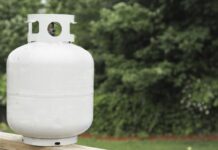An average American would spend $445 per project on tile and grout repair.
Having clean tiles makes your kitchen inviting and refreshing. Tiled surfaces have good durability, are easy to clean and maintain. You need warm water, a chamois mop, and a cleaning product to keep the tiles clean and shiny.
Neglected kitchen tiles look grimy and maintaining them is tedious. Sweeping and mopping the kitchen tiles may seem insufficient. Some people resort to drastic cleaning kitchen tile techniques.
Continuous use of improper cleaning tile methods may damage the tiles in the end. Here are some of the kitchen tile cleaning mistakes that you must avoid.
1. Not Using the Right Tools for Vacuuming Tiles
A vacuum cleaner has a variety of tools for cleaning surfaces. These tools differ based on the surface. The manufacturers have designated the tools to fit specific cleaning areas.
With the correct use, it would be easier to clean tiled surfaces. After removing dust and dirt from kitchen tiles, most people prefer mopping them. Be cautious while mopping so that you don’t leave the tiles damp for long.
2. Failing to Follow Instructions When Using Cleaning Products
You may have found the right products or chemicals for kitchen tile cleaning. It doesn’t necessarily mean using the whole bottle for cleaning. Following instructions while using these cleaning agents saves your tiles from damage.
Failure to which you may end up with a wax or soap buildup that’s difficult to remove. It may also give your tiles a dull appearance. There are several options for tile maintenance and care.
It’s critical to understand the options before replacing the entire kitchen tiles.
3. Too Much Water When Cleaning Kitchen Tile
Water is an excellent option for cleaning your kitchen tiles. It doesn’t contain harsh chemicals that can damage the surface. An excessive amount of water may penetrate through the grout and cause you some trouble down the line.
Some tile types, like porcelain, can withstand a lot of water while others cannot. Also, as the porous grout soaks up dirty water, the grout lines will start looking dark and grimy. Cleaning them would be difficult.
When cleaning your tiles, use as little water as possible. Adding more water is easy, but removing it is a task.
4. Your Steam Cleaner Isn’t Compatible With Your Tiles
While cleaning tiles in your kitchen, a steam cleaner can be an excellent option. It easily removes sticky gunk and dirt from the floor or wall tiles. However, a steam cleaner can damage certain types of tiles.
The steamer can generally work well on porcelain and ceramic tiles. Linoleum and Vinyl tiles cannot withstand moisture and extreme heat. You may have trouble knowing if your tiles can be steam cleaned.
Consult a professional cleaner or reach out to the manufacturer. If the tyles cannot hold out against a steamer, the professional cleaner may provide another cleaning option for you.
5. Using Abrasive Products
We all want to avoid harming our kitchen tiles and grout. Refrain from the use of metal scrubbing pads or steel wool. They can scratch, stain, and destroy the glossy finish of the porcelain or ceramic tiles.
When choosing cleaning products, pick the ones designed for your tiles. You can clean linoleum tiles by mixing water with borax. You can also use diluted vinegar and water for cleaning and maintaining kitchen tile.
6. Using Cleaners Based on Waxes, Oils, and Sealers
Cleaning products based on waxes temporarily protect your tiles against stain, wear, and odor. For a long-lasting solution, waxes pose multiple problems. You must remove and reapply waxes regularly.
Poor stripping may cause wax buildup, a yellowy stain, scratches, and a dirt magnet. Using oil-based cleaners on kitchen floor tiles increases the risk of flipping or falling. Without proper knowledge and experience, selecting and applying sealers to your tiles can be tricky.
It could leave you with stains, slippery tile, flaking, and peeling grout lines.
7. Using Harsh Cleaning Chemicals
Avoid using muriatic acid, bleach, and other harsh chemicals for keeping kitchen tile clean. Splashes and spillage from these chemicals can harm kitchen fixtures and appliances. They can also expose you to serious health risks.
Moreover, cleaning solutions with harsh chemicals can deteriorate your tile and grout. They can lead to eventual damage if used for a long time.
8. Not Sweeping Enough
A tiled kitchen requires thorough sweeping. Dirt causes minor damage to the tiles. Yet, foot traffic in the kitchen area grinds the particles into the tiles, forming stretches.
Regular sweeping of the tiles helps you avoid this. If the bristles of your broom are rough, use a mob attached with a cleaning cloth.
9. Avoiding Professionals
Consider professional services rather than risking Cleaning tile in your kitchen. They will assist you in preventing damage while ensuring proper tile care. Furthermore, you can relax knowing that the tile cleaning is handled by someone experienced.
It may be expensive than cleaning yourself but worth the investment. Tiles in the kitchen area require a lot of upkeep. Tiling your kitchen is pointless if you don’t intend to maintain it.
Kitchen Tile Cleaning Mistakes to Avoid
Kitchen tiles can last a lifetime if you give them proper care. Tiles are low maintenance, durable, and appealing. However, while cleaning kitchen tile, homeowners fail to realize that they could be making some mistakes.
We hope you learn from your mistakes and adopt the best cleaning practices for your kitchen tiles.
For more informative content on Technology, Marketing, and Fashion, please see more of our other blog posts.










